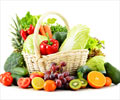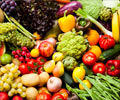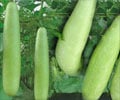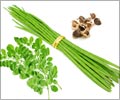Home grown vegetables, often thought to be healthier, may in fact be toxic, as a result of contaminants in soil, Australian researchers say.
Home grown vegetables, toxic, contaminants, soilHome grown vegetables, often thought to be healthier, may in fact be toxic, as a result of contaminants in soil, Australian researchers say.
‘As our cities and towns grow, they sprawl across old orchards or farms, mine sites and former industrial plants or gasworks which have left residues of toxic contaminants in the soil,’ says Dr Euan Smith of the CRC for Contamination Assessment and Remediation of the Environment.
Scientists at the Cooperative Research Centre (CRC) are working to quantify the risk to consumers who eat their own home-grown fresh vegetables, given that residues of arsenic, lead, cadmium and DDT can linger in the soils for decades after the industry which left them has disappeared, says CRC CARE managing director Professor Ravi Naidu.
‘Australians eat quite large amounts of home-grown produce’, says Professor Naidu.
‘The last national survey indicated Australians consume around 150,000 tonnes of garden vegies every year, with the greatest consumption in regional NSW, Victoria and Queensland – but there is also considerable intake in all the main capital cities,’ he said.
Advertisement
The work is based on previous research carried out by the CRC CARE team into arsenic contamination of the food supply in Bangladesh, where 40 million people are affected by arsenic in the water and food grown or cooked using it.
Advertisement
DDT was widely used to control insect pests in orchards from 1950-70, before it was banned, and the residues of this persistent pesticide linger to this day. Lead was also used as a pesticide, and is a pollutant commonly found at the sites of old battery factories, former metal mining and smelter sites, and gasworks. Cadmium is in areas which have been treated with superphosphate fertiliser or sewage solids, or were former gasworks.
The team has been investigating silverbeet, lettuce, radish, tomatoes, zucchini, carrots, potatoes and cabbages to see how much contamination they take into the edible parts of the plant.
The results are being used by collaborating scientists at HortResearch, New Zealand, who are developing a model for predicting the ‘bioavailability’ of the contaminants to humans who eat the vegetables regularly – that is, the amount of toxic contaminants they would actually be exposed to.
‘Although it varies a lot, according to type of vegetable, type of contamination and soil conditions, in most cases the levels in the diet would be well within safety limits set under national guidelines’, says Dr Smith.
However it appears that root vegetables such as radishes, like anything grown in the soil, are likely to absorb greater amounts of toxins than leafy plants like spinach or fruit like tomatoes and zucchini.
‘This is a new finding given that until recently, leafy vegetables were considered to be metal accumulators’, says Professor Naidu.
However, Dr Smith cautions that people who grow their own vegetables on a contaminated soil are at greater risk from breathing in the contaminated dust, or through skin contact with the soil, than from eating their produce.
‘This underlines the need to wash garden vegetables grown in such soils as thoroughly as you would anything bought from a shop, to remove all traces of contaminated dust’, says Dr Smith.
‘And, if you’re planning to grow a lot of vegetables in your garden, then it might pay to investigate the industrial history of the land your house now sits on, and work out what sorts of risks you may have to manage.’
Source-Medindia
GPL/L











